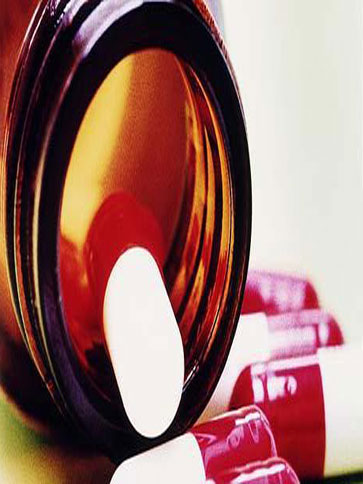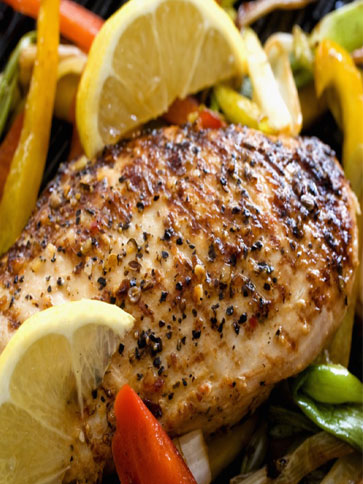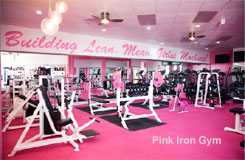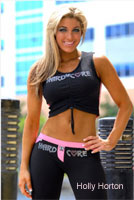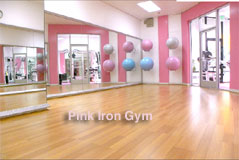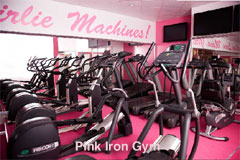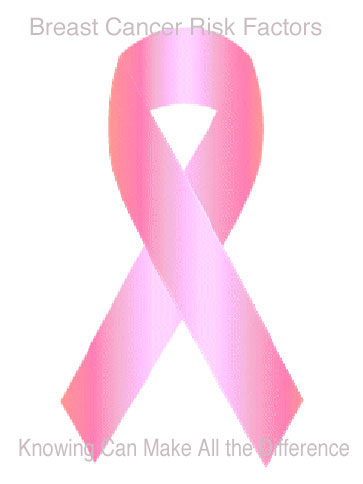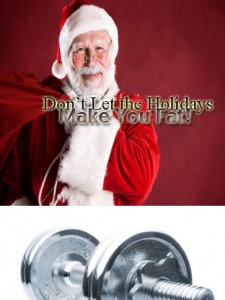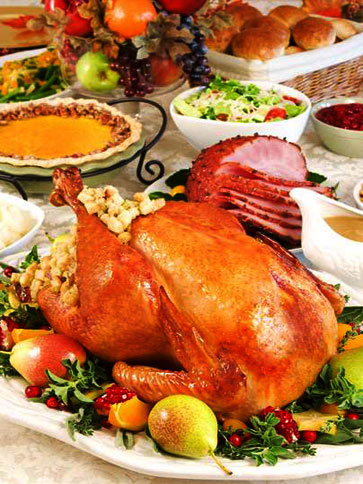 Health shouldn’t be intimidating. Feeling good about yourself is critical to living a fulfilled life. When you feel great, you radiate. Imagine what kind of world this would be if we were all happy and in good health. -Anthony Heredia-
Health shouldn’t be intimidating. Feeling good about yourself is critical to living a fulfilled life. When you feel great, you radiate. Imagine what kind of world this would be if we were all happy and in good health. -Anthony Heredia-
From teaching us how to drop a dress size in a month to informing us about the dangers of not getting enough sleep, Fitness Couture’s Anthony Heredia has been the voice of health and fitness for almost a year. I’ve heeded his advice many times and have seen for myself just how valid and necessary his contributions are.
You have a passion for fitness and health. What sparked that passion?
My passion for health and fitness started with my own weight loss story. I had been obese my entire life. I didn’t know a thin day until I was 18. I was tired of being 300 lbs and wanted to do something about it. I did what I always do when I don’t understand something, research. The first 40 lbs I lost with a popular weight loss program, but I soon became more knowledgeable than my counselors. I read everything I could get my hands on that related to weight loss. All my neighbors asked what my secret was, so I helped them with the little bit I knew at the time; and they lost weight. It was such a great feeling. I was hooked. I have now been in the health & fitness industry over eight years, 100 lbs of body fat lighter, and have had the pleasure of helping hundreds of lives personally; and now through Agenda I can reach millions. I beat the weight loss/gain cycles by educating myself, and now I am able to share that with others.
You’ve been writing for Agenda for a year now. How do you feel you have grown as a writer?
My style and skills in writing have grown exponentially, thanks to the highly experienced nurturing staff. I was a health guy in a high fashion world with no previous fashion affiliations; I had a lot to adapt to. I am a quick learner, so I attended numerous fashion events and asked countless questions to grow quickly. As a writer I have grown to be more empathetic to my readers and more conscious of their concerns and needs. My fashion-forward colleagues are a great resource for choosing topics relevant to our readers. They help me stay effective in translating confusing health and fitness information into the polished package that our readers can enjoy and apply to their lives. I believe to be a good writer, I must stay inquisitive and passionate and in tune with my readers.
Is there any particular health/fitness topic that is difficult to write about?
To be honest, no, but that’s because I am fascinated by the human body. By this fall I will have nine years of experience and eight health credentials, varying from fitness, nutrition, and weight loss to a Master’s in massage and physical therapy for balance; but I still believe you can never know enough. There is just so much to learn, but I love it all—that’s why it’s not difficult. I am going to remain a student of the human body forever. No one knows everything, regardless of how many degrees or years of experience they have. When I am asked to write an article about a subject I don’t fully understand, I get excited—time to research. I get the opportunity to dive into medical journals, textbooks, and research a subject I am passionate about, learn something new and grow. Nothing is truly difficult when you truly care. I am curious by nature, always wanting to know more so that I can translate it for those who need it.
What is your focus when you are writing? What do you want to accomplish with your writing?
My job when writing is to translate tedious technical medical info into something our readers can understand, enjoy, and apply to improve their lives. The deterioration of our nation’s health is not because of a lack of access to knowledge but a glitch in communication—translating this heavy information into something the average person can relate to and apply. People care; they are just lost and just confused by the barrage of information: “Whom do I listen to and believe?” I wish I could magically zap what I know into everybody in this world. I am invested in helping everyone I can because I believe that living a healthy life should not be luxury. I find it a privilege to serve as a translator to those who care to listen.
What are your goals in the fitness/health industry?
Although I am a health writer for a fashion magazine, I am invested long term in helping all people from every walk of life. I want to help improve the quality of life of as many people as I can on as large a scale as possible in my lifetime. I want to be a voice of reason in a sea of insanity and confusion. I want to empower by giving the tools needed to reach realistic health goals so people will lead happier, longer, more productive lives. It’s not always about looking great. Sometimes a mom just wants to keep up with her kids, or a dad wants to avoid health complications, or a grandfather wants to live to see his grandkids graduate from college. My ultimate goal is to learn as much as I can, condense and translate vital health and fitness information into realistic affordable solutions.
Your column is “Fitness Couture.” How does women’s fashion play a role in shaping an article? Are there any challenges writing for this demographic?
When I first jumped in, I wondered how a fitness grunt like myself was going to meld into this couture fashion world—but it wasn’t that hard. Fashion is art draped upon bodies that best reflect the artistic vision of the designer to bring their image to life. To me the human body is art, clay that can be shaped and molded with the proper vision and knowledge. I delved into the fashion world by simply studying everything about the numerous body types in runway shows as I sat and watched front row. While my editor broke down the fashion, I broke down the body underneath the fashion.
If you could offer three tips to people about health and fitness, what would they be?
There are NO magic bullets. 1) If it sounds too good to be true, walk away fast! For long-term results, you must learn about yourself and make positive changes in your lifestyle that work for you. Balance customized to your lifestyle is key. 2) There is always an answer. If you have a realistic goal and just can’t seem to reach it, don’t give up. Do your research and find compassionate help. There is always a solution but some problems you can’t beat alone. Don’t give up! 3) Work with your body, not against it. The human body adapts to what you do to it. Starve it and it goes into self-defense mode; over feed it and it stores the excess. Deprive it of rest and it becomes weak and slow. You get the idea? It is doing what it does best—surviving. Find a healthy balance and give your body what it needs and when it needs it consistently, and I promise your health and figure will transform significantly.
Interviewed by Kaylene Peoples
